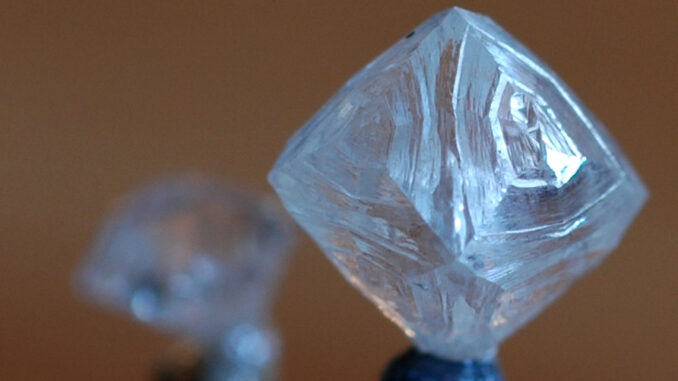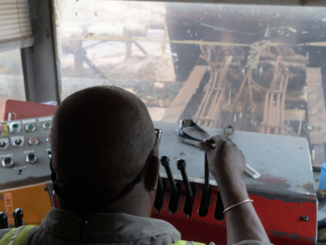
Researchers at Fraunhofer US, an independent international affiliate of the Fraunhofer-Gesellschaft, have succeeded in developing wafer-thin nano-membranes from synthetic diamonds that can be integrated into electronic components, thereby reducing the local heat load by up to 10 times. This helps improve the road performance and service life of electric cars and significantly reduces battery charging time.
According to the scientists, diamond is known for its high thermal conductivity, which is four to five times higher than that of copper. For this reason, it is a particularly interesting material when it comes to cooling power electronics in electric transportation, photovoltaics or storage systems.
Until now, heat sinks made of copper or aluminum plates have increased the heat-emitting surface of components that produce heat, thus preventing damage due to overheating. But the new nano-membranes made from synthetic diamonds that are thinner than a human hair can be integrated directly into electronic components to cool the power electronics in electric vehicles, which transfer traction energy from the battery to the electric motor and convert the current from direct current to alternating current.
These flexible, electrically insulating nano-membranes have the potential to reduce the local heat load of electronic components, such as current regulators in electric motors, thus increasing the energy efficiency, service life and road performance of electric vehicles.
When used in the charging infrastructure, the diamond membranes also contribute to charging speeds that are five times higher than the current average.
The researchers pointed out that, generally speaking, applying a copper layer underneath the component improves the heat flow. However, there is an electrically insulating oxide or nitride layer between the copper and the component, which has poor thermal conductivity.
“We want to replace this intermediate layer with our diamond nanomembrane, which is extremely effective at transferring heat to the copper, as diamonds can be processed into conductive paths,” Matthias Mühle, head of the Diamond Technologies group at the Fraunhofer US Center Midwest CMW, said in a media statement. “As our membrane is flexible and free-standing, it can be positioned anywhere on the component or the copper or integrated directly into the cooling circuit.”
Mühle and his team achieved this by growing the polycrystalline diamond nanomembrane on a separate silicon wafer, then detaching it, turning it over and etching away the back of the diamond layer. This results in a free-standing, smooth diamond that can be heated at a low temperature of 80°C and subsequently attached to the component.
“The heat treatment automatically bonds the micrometre-thick membrane to the electronic component. The diamond is then no longer free-standing but integrated into the system,” the expert said.
The nanomembrane can be produced on a wafer scale four inches and larger, making it well-suited for industrial applications.
According to Mühle, a patent has already been filed for the development. Application tests with inverters and transformers in application fields such as electric transportation and telecommunications are due to start this year.
Source: Mining.com



